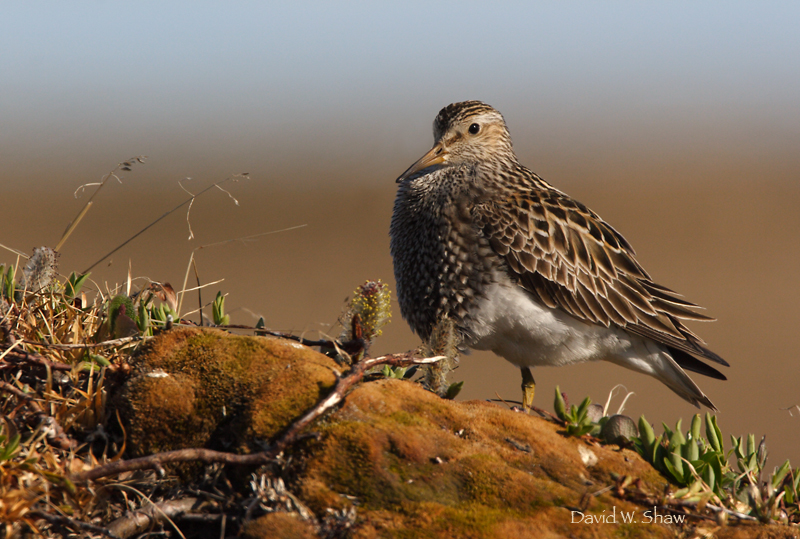
Canon 20D, 500mm f4L w/ 1.4tc, 1/800th sec @ f10, ISO 200
I made the image above on a photography trip I was leading for the excellent wilderness outfitter Arctic Wild in 2007. It was a custom trip, which basically means that the two clients wanted to have a trip designed to their needs. I was fortunate enough to be their guide. In mid-June I met my two clients in the remote village of Kaktovik on the coastal plain of the Arctic National Wildlife Refuge. From there we flew out to a wilderness airstrip on the Canning River for a few days of shooting, then moved north to the mouth of the Canning for the final days of the trip. Bird photography was the goal of the trip, and I did my best to put the two clients in the best situations I could muster. I think I was fairly successful. But shooting in these areas is not easy. There are a lot of considerations from memory cards to charging batteries, to packing light for small-plane travel. I regularly get questions about what I carry on a wilderness photography trip, and here is my answer:
I take what I need. There now we can all go home.
Of course it isn't that straightforward. Needs and wants are often confounded so its important to understand priorities. First and foremost, I carry what I need to stay warm, dry, and well-fed. It is impossible to take good photographs, if my hands are too cold to hold the camera because I decided to leave behind my mittens in exchange for an extra lens. I won't go into the details of my personal packing list, because it varies so much from trip to trip. From there I can start thinking about camera gear.
On most flights into the bush, passengers are limited to 50-60lbs of personal gear. On backpacking trips that amount will also include your share of the food and group equipment. So packing light is key. I can generally get all my non-photographic equipment including tent, clothing, sleeping bag, pad and such down to 25-30lbs. That leaves 25-35 lbs remaining for camera gear. Here is my photo equipment list for a non-backpacking, photography specific trip:
2 camera bodies (a backup is vital)
500mm f4
1.4x TC
17-40 f4
70-200 f2.8
30mm f1.4 (this one is optional, and can be left behind if things are tight)
Carbon fiber tripod
Memory card wallet with about 25 gigs of memory
Camera backpack
2-3 extra batteries
Solar panel and battery charger
2 stand-alone battery powered hard drive/card readers
Small bag of filters, remote triggers and other accessories
Total camera gear weight: about 30lbs.
Backing up images is vital. A good friend and fellow Alaska photographer, Hugh Rose, recently lost his compact flash card wallet overboard in Prince William Sound. I'm not sure he had his images backed up or not, but the lesson is clear: cards are replaceable, but your images aren't, so backup. Several companies make external, stand-alone, battery-powered hard drives that can be used to back up your images no matter where you are. Jobo, Sanho, Nexto, and Epson are four. I carry two in separate waterproof cases so everything is in duplicate.
Battery charging- With some luck, your time in the backcountry will include a few sunny days and the sun is an excellent source of electricity if you've got the right tools. Brunton manufactures several varieties of compact and foldable solar panels. With the right attachments and chargers, you have all you need to keep shooting. I won't go into the technical details here, but check out their website for some ideas. You can purchase chargers made to work with a variety of camera batteries (using adjustable contact points on the charger) which are compatible with solar panels. A visit to your local battery supply store will get you going in the right direction.
So the summary is this: extended photo trips to the world's wild places can be full of hurdles. But none of them are insurmountable. If you have more questions about this, or anything else, leave them in the comments and I'll do my best to answer them.

No comments:
Post a Comment